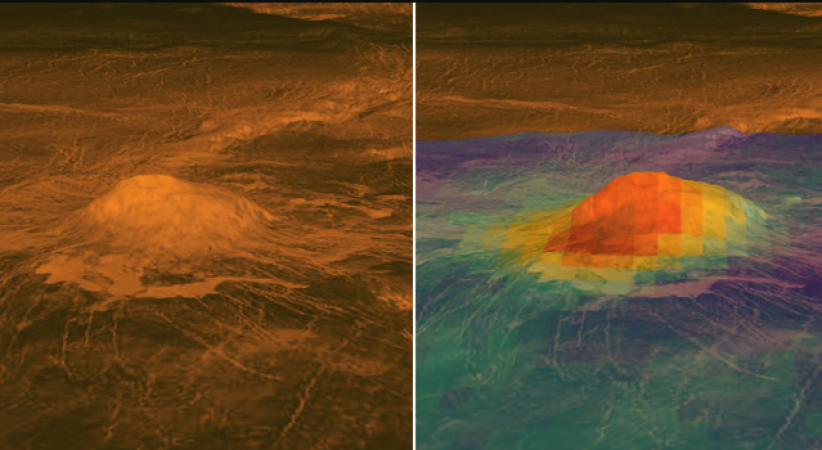
USA: For the first time, a volcano that is currently active on Venus has been directly observed by scientists. They examined radar images from the NASA Magellan mission, which was launched in the 1990s, almost thirty years ago. Images showed a volcanic vent on Venus changed in size and shape over the course of less than a year. The discovery of active volcanism on Venus is significant for the following reasons.
Venus, sometimes referred to as Earth's twin, is similar to our planet in size and rocky composition. Any direct observations are difficult due to the thick atmosphere and clouds of toxic carbon dioxide on Venus. There are currently over 1,300 active volcanoes known to exist on Earth, but there has never been any proof of volcanism discovered on Venus.
The exploration of Venus by Magellan was not simple. The mission orbited Venus repeatedly, taking numerous photos in the same places. Early in the mission, the spacecraft's orbit started to deteriorate, which reduced the amount of data it collected on each orbit of the planet. Despite the difficulties, the mission was still able to map at least twice 43% of Venus.
Also Read: Iranian oil exports surged to their highest level since 2018 last year
"I didn't really expect to be successful," said Robert Herrick, a research professor at the University of Alaska Fairbanks, "but after about 200 hours of manually comparing the images of different Magellan orbits, I saw two images of the same region taken eight months apart exhibiting telltale geological changes caused by an eruption.
Two of Venus' largest volcanoes, Ozza Mons and Maat Mons, are located in the Atla Regio region, which is close to the planet's equator. Although there was no evidence of recent activity, the region has been thought to be volcanically active. Magellan data analysis revealed that between February and October 1991, a volcanic vent connected to Maat Mons underwent a significant change.
The vent had a nearly circular appearance in the February image and covered an area of less than 2.2 square kilometres. Details about the vent that indicate volcanic activity include its steep interior sides and evidence of drained lava down its exterior slopes.
The same vent doubled in size and changed shape in radar images taken eight months later. Additionally, it seemed to be completely surrounded by a lava lake. Since the two observations were made from different viewing angles and offered different perspectives, it was challenging to compare the images. The three decades old data's low resolution further complicated matters.
The researchers eventually turned to creating computer simulations of the vent to test various geological event scenarios, including landslides. They deduced from those models that the only event that could have caused the observed change in the vents was a volcanic eruption. The size of the lava flow produced by the Maat Mons activity and the Big Island of Hawaii's Kilauea eruption in 2018 are related, according to the researchers.
Also Read: Nine people are found guilty by an EU state of supporting Russia
Volcanoes that are still active can provide insight into how a planet's interior shapes its crust, drives its evolution, and influences its habitability. This will be carried out by one of NASA's newest missions to Venus, called VERITAS (Venus Emissivity, Radio science, InSAR, Topography, and Spectroscopy). EnVision, a Venus mission that the ESA is planning, is anticipated to launch in the early 2030s.